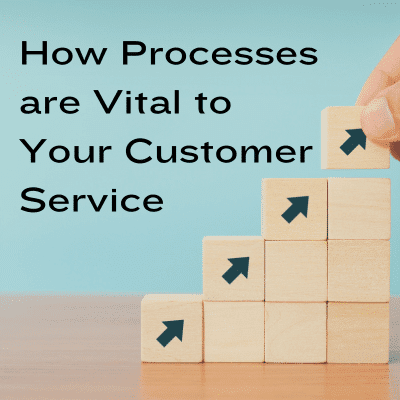Have you ever gone outside to start your car only for the lights to turn on but it never turns over to start? Or have you ever forgotten to turn your alarm clock on to wake you up the next morning for work? Or had your computer get stuck on the startup screen and never take you to your desktop?For each of those examples, a part of the process became extremely vital to the action being performed. The starter needs to turn over to make the car run, the alarm clock needs set the night before to wake you up in the morning, and the computer has to move past the startup screen for you to be able to continue with your day.
Just as each of those processes is important to those essential functions, the methods you enact towards customer service are vital as well. They allow you to provide an exceptional level of customer support to your consumers and receive feedback from them to ensure that your processes are enacted to your standard.
The Processes
The most common processes in customer service have become customer surveys, online support, and social media correspondence. Customer surveys allow for the consumer to remain anonymous while providing feedback on the experience they had in dealing with you or someone within your company.
A lot of consumers will use these surveys to tell you about employees that went above and beyond for them and made their experience one they will want to repeat. Others will use it to tell you about an experience they had that would potentially cause them to stop doing business with your brand and present you with an opportunity to resolve their issue to keep them coming back.
Online support allows for your consumer to reach out to you with just a few simple clicks of a button and, if you choose, will enable them to talk to a live agent to get the support they need without having to call in. This process allows you to resolve the issue they come to you within a quick and efficient manner to ensure their satisfaction.
Social media correspondence enables the consumer to post about their experience with your brand for your entire following to see. Regular consumers and potential consumers will both see the experiences others have had and through the comments, they will be able to know how you settled those that post with bad experiences or complaints.
Each of these allows you to gauge where you stand when it comes to your consumer and your customer service standards.
Standards to Uphold
The most significant part of each area of the customer service process comes from the standards you uphold when it comes to how you want your consumers to be treated by those they interact with inside of your brand.
Do you want those within your brand to be driven towards doing whatever it takes to ensure your consumer is satisfied?
If you offer online support or social media correspondence, do you want your consumer to be able to interact with a live agent via your website or social media direct message system or do you want them to have to wait for an e-mailed or direct messaged response?
If you offer a live agent, do you want that team to be available around the clock to serve your consumer whenever they need it? How quickly will you expect your consumer’s response or concern to be handled?
The decisions you make involving each of these processes will become your standard of customer service and will affect how your consumer views your brand. Now this standard can change over time as you see what works best for your consumer or what is leaving them with something to be desired.
Overall, your consumer is going to look for the same type of service in every single person involved with your brand. According to the State of the ConnectedCustomer Report by Salesforce, 81% of consumers are looking to receive the same type of service no matter where or who they interact with when it comes to your brand.
Well, How do I Ensure That?
To do that involves enacting another process to customer service: training.
With your standards in place, every person that you bring on as a part of your brand has to be trained in accordance with your standards. If you have a storefront and you want every person that walks in your door to be greeted, ensure the person at the front of your store knows to look for and say hello to every person that walks in.
Your standards should be made known during the on-boarding process, so every incoming employee has an understanding of what is expected of them when it comes to your consumer. As long as they are part of your brand, your standards of customer service should be taught and coached to ensure that they remain consistent.
If you choose to change anything about your standards, ensure that each person is trained accordingly to match your new norm. This ensures that your consumer is getting the consistent service they expect.
The more those involved in your brand understand how you expect every consumer and complication to be handled, the more your consumer will come to trust your brand and the more likely they are to return to you when they need your services again. Along that same line of thinking, they will also be more likely to recommend others they know to come to you. So not only will you be able to retain your current consumer, but you’ll be building your brand and your brand’s reputation at the same time.
While we know that the line about the customer always being right isn’t still true, their satisfaction is what ultimately matters, and the processes you enact along with the standards you uphold will ensure that satisfaction.















